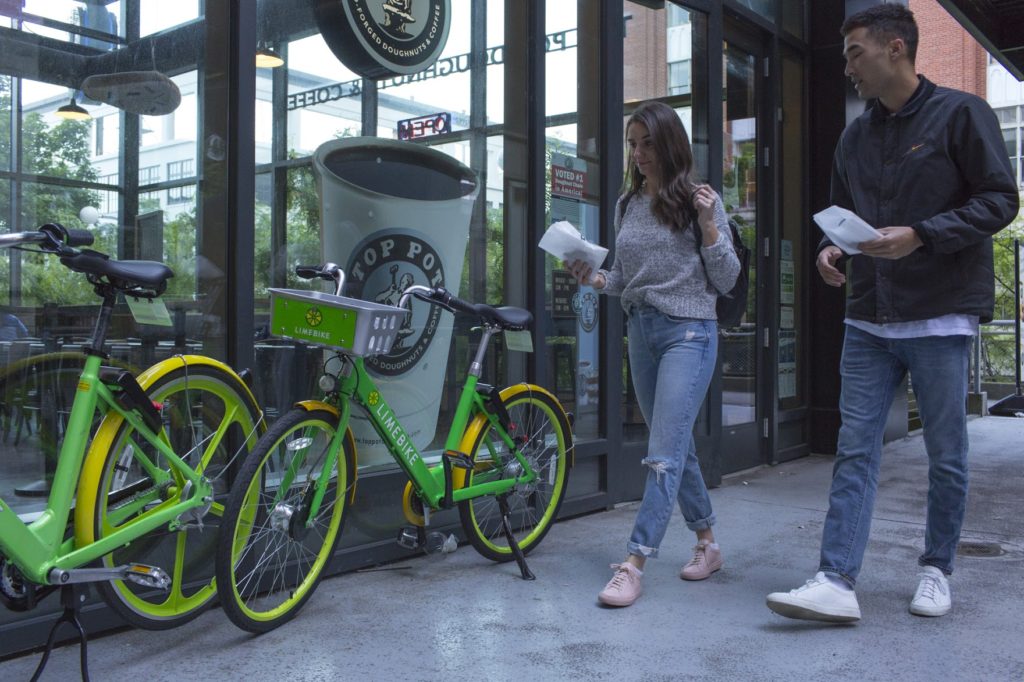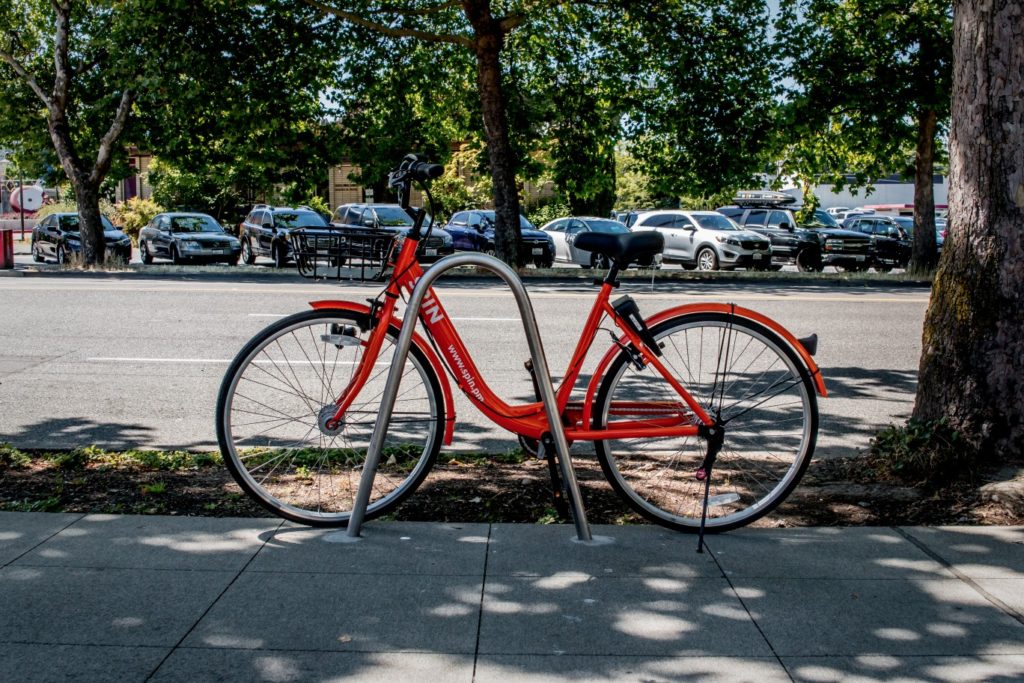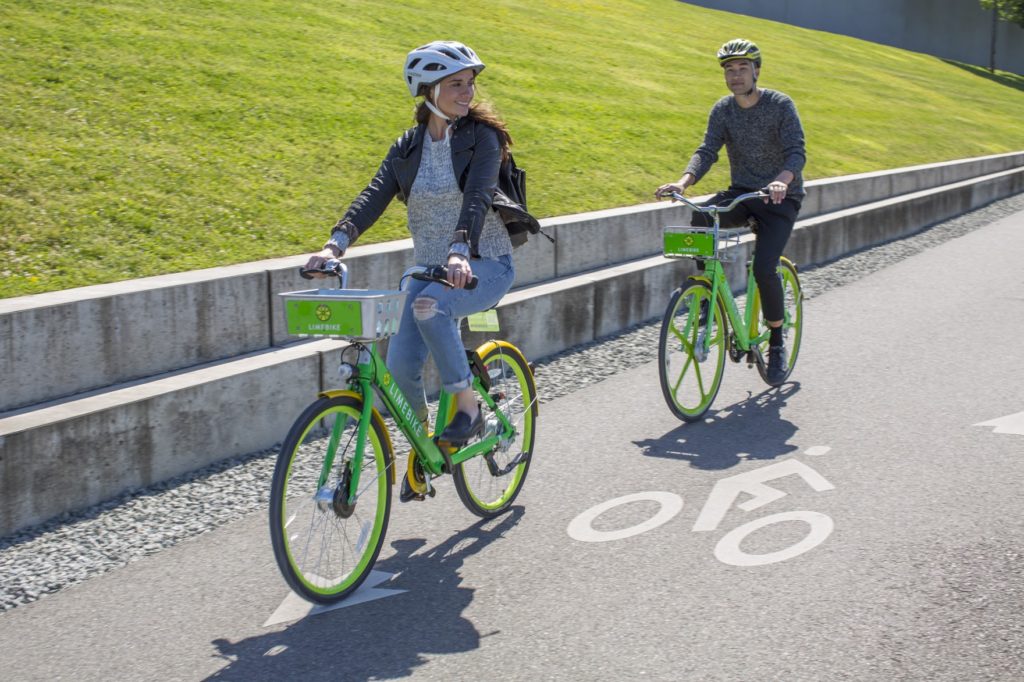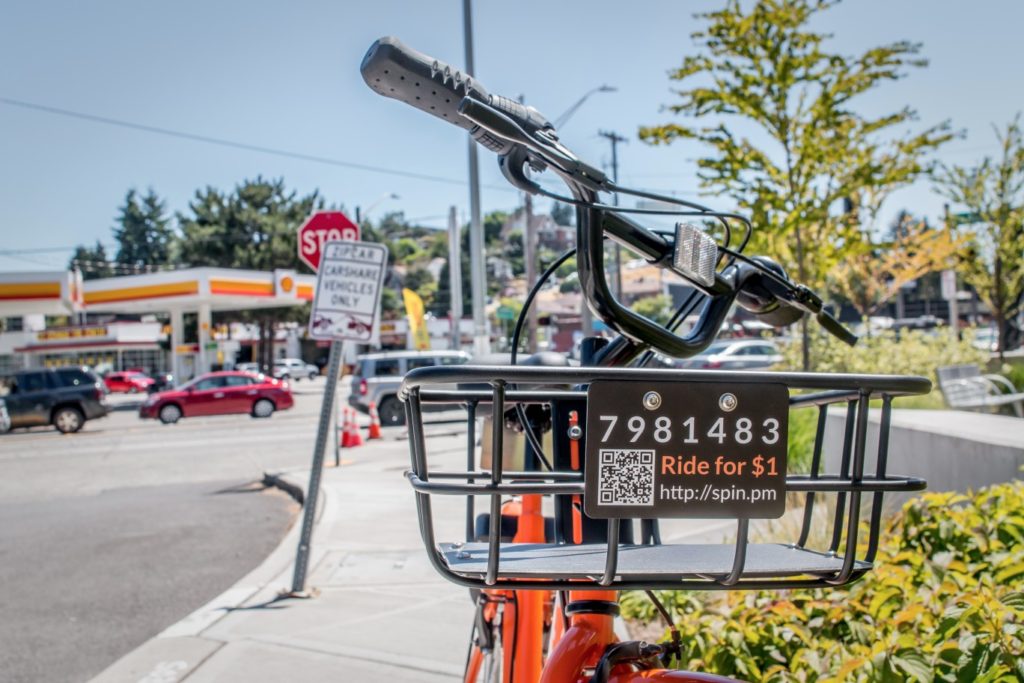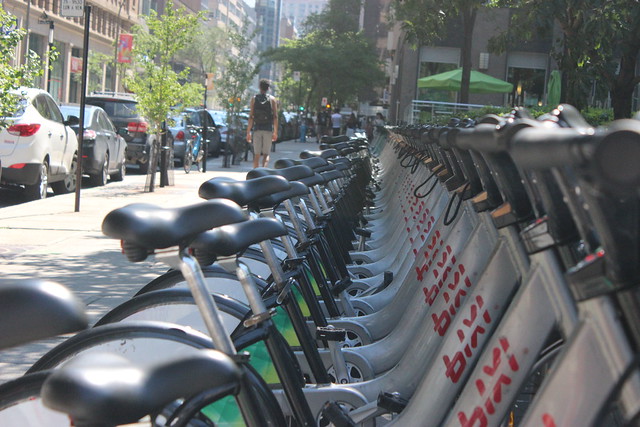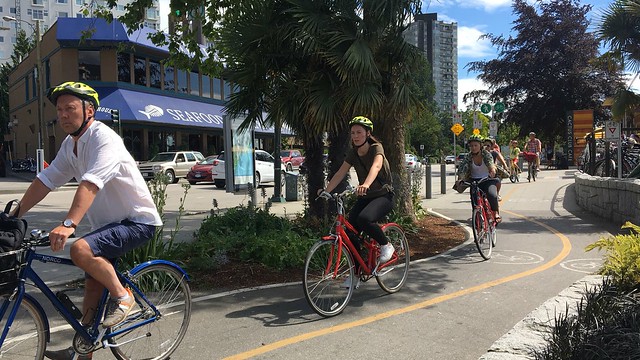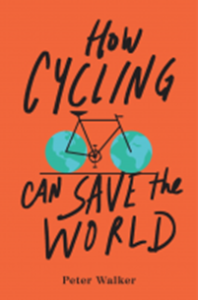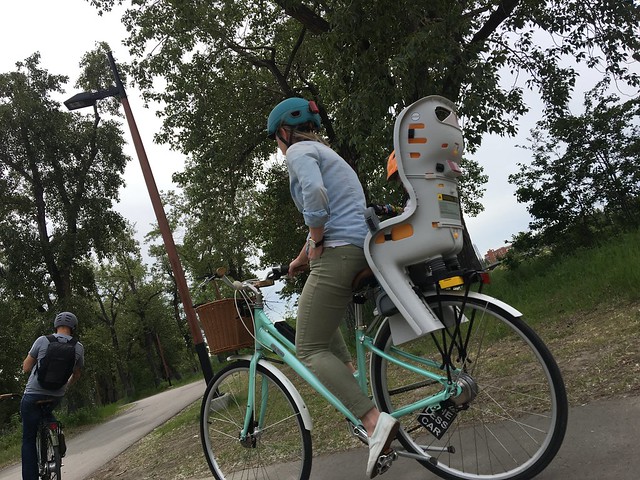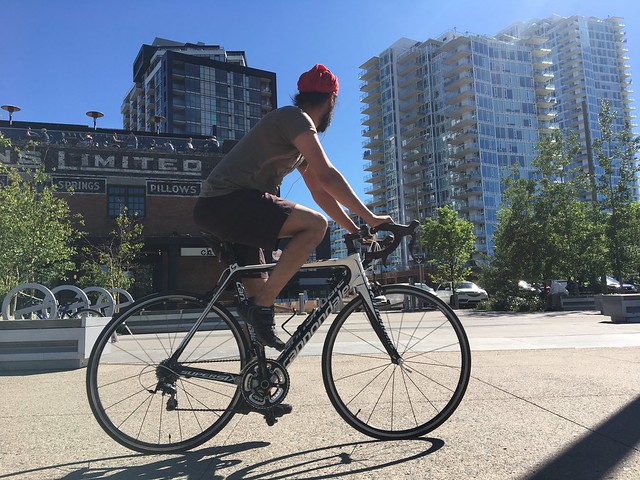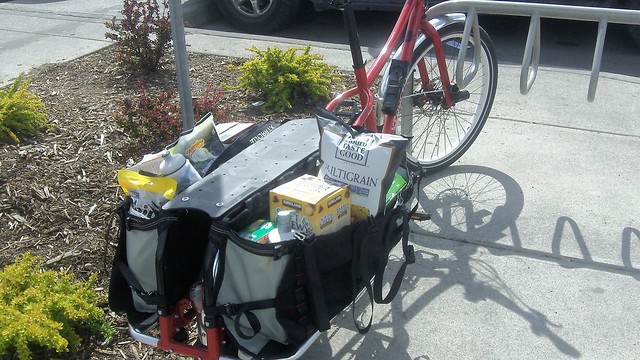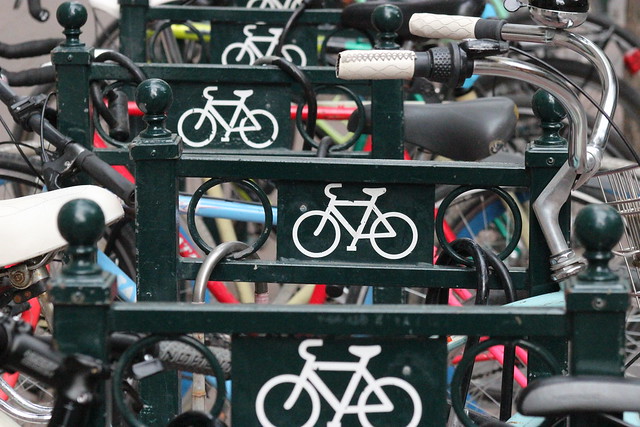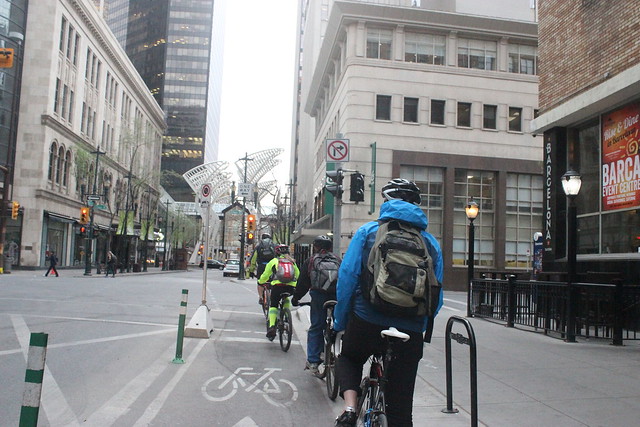During municipal election season, you may find yourself opening your door to a candidate who wants your vote. Sadly, not all would-be politicians will share your enlightened view on the benefits of a bike-friendly city. So how are you to know if this is a candidate who deserves your vote?
We are here to help! Here are some suggested questions to gauge the support your city council candidate may offer to active transportation in general and cycling in particular. Remember to work fast: door-to-door campaigning is all about efficiency for a candidate, so they can’t afford to get involved in a serious policy discussion at each door, despite the illusion. So get your questions in quickly.
1. What’s your stance on transportation policy?
The answer to this question won’t actually give you any useful information about your candidate. It’s just a warm up. Unless your candidate is deranged or a complete ideologue, they will tend to answer with some version of: “We need to balance the needs of all users by building within our means.” Blah, blah, blah. They will probably also choose one particular transportation project that has been long delayed and promise to get it done. If you’re in the suburbs, that will be a road project. If you’re more inner-city, it will be a transit project. None of this matters. It’s just a set-up.
2. How will you improve my daily commute?
Now we’re getting into it. This is a more difficult question to answer. You still haven’t revealed yourself as a driver, transit user, cyclist or pedestrian (you can’t exist as more than one of those in the minds of a politician, even though most of us are), which means the candidate can not yet enter pandering mode.
Milquetoast candidates will again use this opportunity for platitudes about smart investments and fiscal responsibility, but those who have a bug in their craw about a particular transportation issue will be unable to resist jumping at this one. Here is where you can tell if the candidate is, generally, interested in all the benefits that come with active transportation and intelligent urban planning, or just cares about moving cars from place to place.
3. How do you get to work? or What do you think of residential speed limits?
See what you did there? Most North Americans will never pose these questions because they’ve never fathomed the possibility that transportation is possible through anything but a car. So by asking this to your candidate, the ruse is up. You’ve just outed yourself: you are revealed as someone woke to the ways of life beyond the single-passenger automobile. Or you are an Uber driver.
Anyway, the way these questions are answered will give you information about the candidate’s perspective. Riding a bike and/or walking through city doesn’t just make you sympathetic to the plight of humans in a car-centric world, it gives you a new perspective on how streets work, and how they can be improved. A bike-riding or walking commuter will have a better, more accurate outlook on their city. You’ll also know the improtance of limiting residential speed limits.
If the candidate is a full-time automobile commuter, but is supportive of active transportation, be cautious, but not dismissive.
4. What do you think of bike lanes?
You don’t need to hear the entire answer to this question to determine if this candidate deserves your vote; you only need the first four words. You are listening for the fabled intro to every irrational anti-bike diatribe: “I like cyclists, but…”
If the sentence begins with those four words, you can disengage your brain, wait for the candidate to finish talking, thank them for their time, and then gently close the door knowing you have crossed a candidate off your list. If the answer begins with anything else, feel free to engage them in a more serious conversation about how to make your city more bike-friendly and, thereby, more healthy, more interesting, safer, quieter, less polluting and better for kids and seniors.
5. Want to go for a ride sometime?
By now, you should have all the information you need to determine if your candidate understands the benefits of bikes and will help further the cause. So this is more like a personality test. If they say no, don’t take it personally. They are probably busy campaigning. If they get a nervous look on their face and offer up a non-committal answer, it’s probably because they think it’s weird that you asked a complete stranger for a bike ride but don’t want to be rude, which is a completely rational response to this question. If they say yes and pull out their calendar, congratulations! You have a new riding buddy, who will have plenty of time to ride with you because a political candidate who agrees to go for bike rides with random constituents during a campaign is probably going to lose the election.
UPDATE: 6. Optional question — The Amazon factor
Now that every city in North America is tripping over itself to woo Amazon and its massive new headquarters, there’s something worth noting in the online retailer’s request for proposals, as pointed out by People for Bikes: “Include connectivity options: sidewalks, bike lanes, trams, metro, bus, light rail, train, and additional creative options to foster connectivity between buildings/facilities.”
So it’s worth posing this to your candidate too: If your candidate hates bike lanes, but still think its possible to entice Amazon, your candidate might be in need of a lesson in cognitive dissonance.



